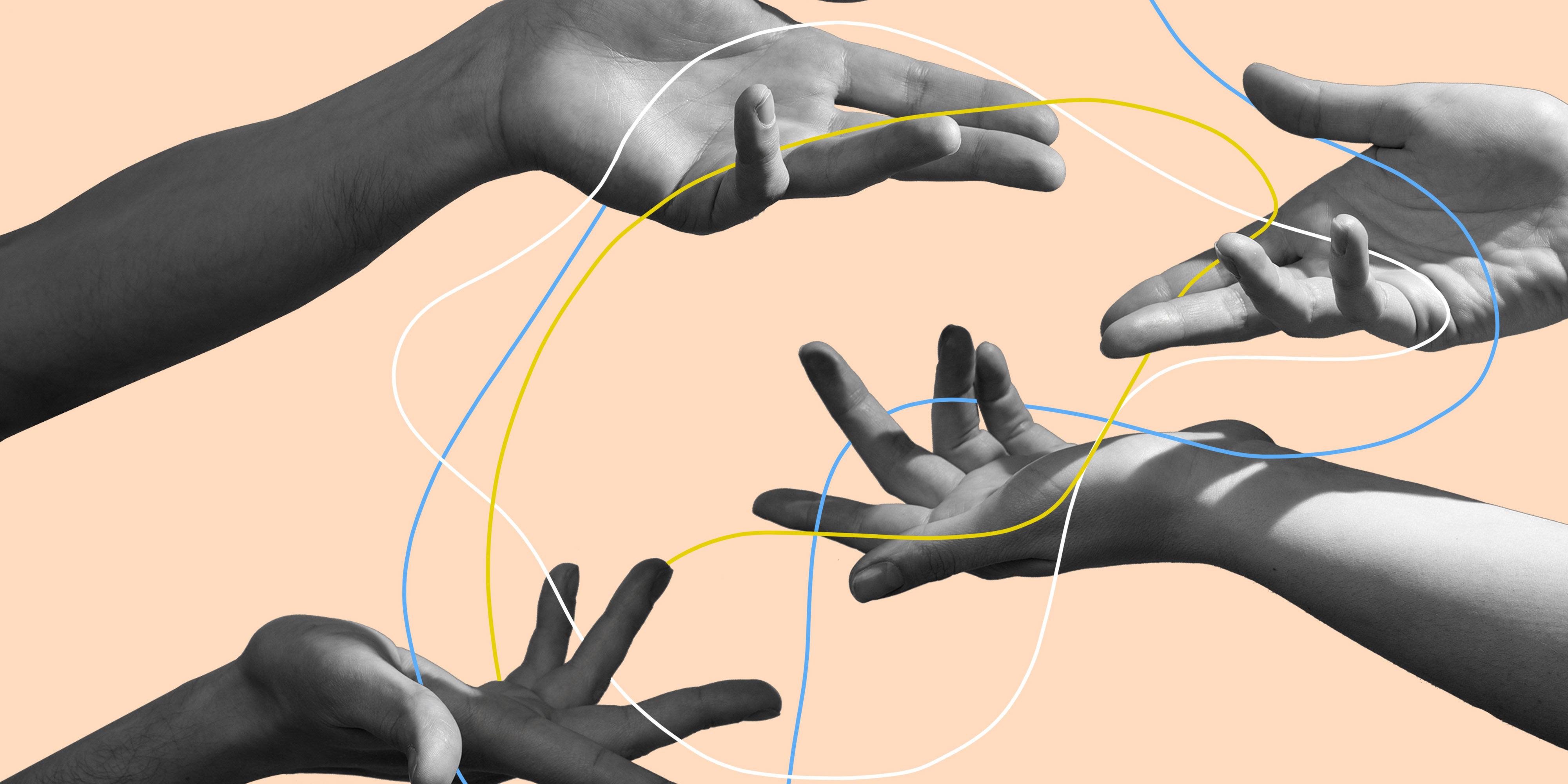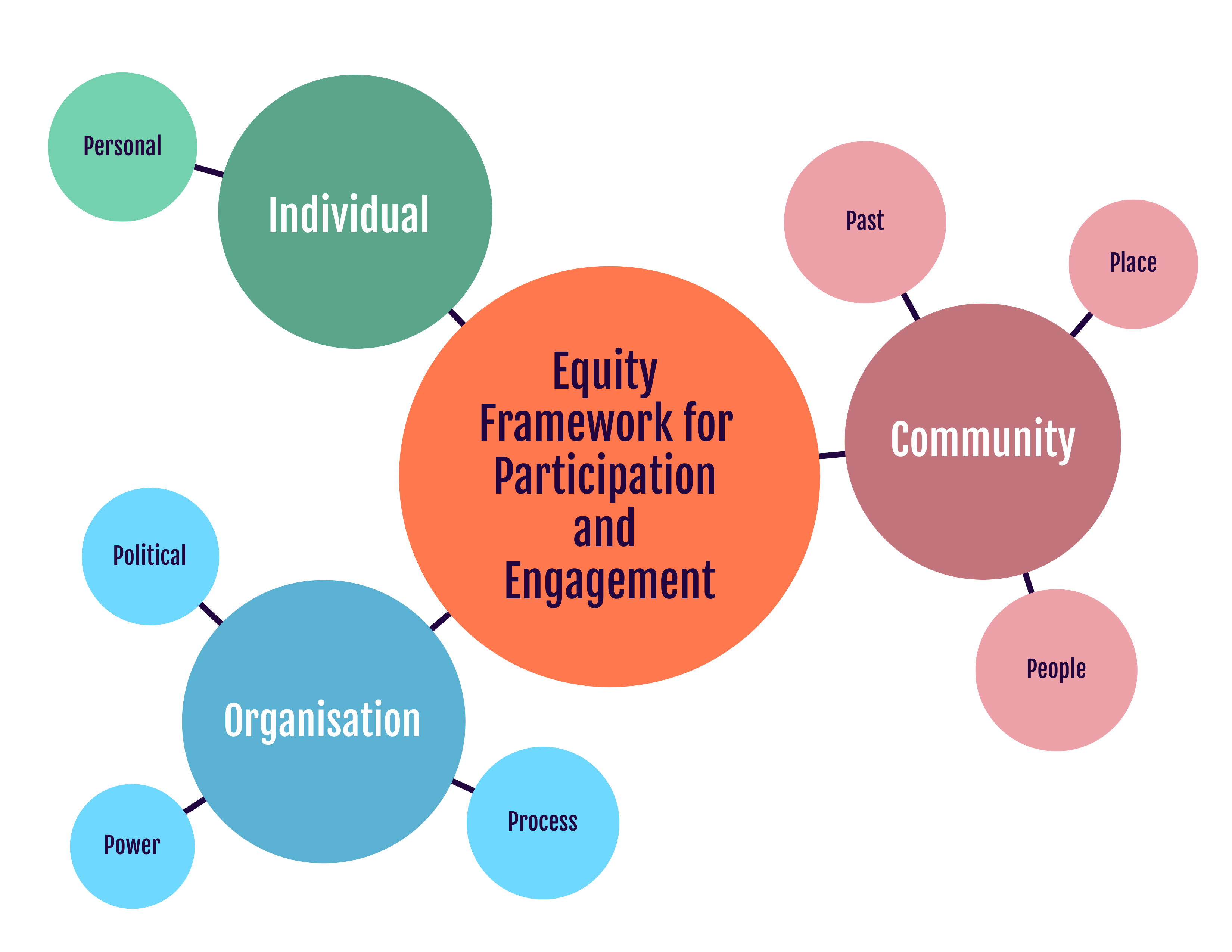Equity Framework for Participation and Engagement

With Alice Sherring FIAP2 | Articulous, IAP2A Trainer
At the 2021 IAP2 Australasian Conference, Articulous shared a planning framework to support equity in public engagement and participatory processes. Developed by Alice Sherring and Amanda Newbery, the framework strives to achieve equitable outcomes by enabling inclusive, diverse and equitable representation in engagement processes.
The framework includes:
- Definitions
- Purpose of an equity-centring framework
- Framework uses
- Assessment tool
1. Definitions
Being ‘equity-centred’ means we put equity at the centre of how we plan for engagement, to advance equitable practice and representation in the democratic process.
The practice of ‘equitable engagement’ means the barriers to engagement experienced by marginalised and underrepresented groups are removed in our organisations, our mindsets, and our communities.
With ’equitable representation’ someone’s race, age, gender, disability, sexuality, place of birth, class, income, education or immigration status, cannot predict representation or participation in the democratic process.
2. Purpose
The Equity Framework for Participation and Engagement seeks to help increase understanding of factors which may contribute to inequity in participatory and engagement processes.
The framework promotes equitable engagement, considering a range of factors at an individual, organisation (or institution) and community level. Applying the framework may help participation and engagement processes to equitably enable participation in problems solving and decision making.
As a result, it also reduces the likelihood that a particular racial or social group will systemically receive the negative impacts of decisions.
3. Using the Framework
Traditionally, organisation-led engagement and participatory processes are designed by experts and professionals who experience some level of privilege. The framework seeks to disrupt this paradigm by providing a lens for equitable practice.
At the personal level, turning an equity lens on onto the work we do means we might need to change:
- the topics we discuss
- the people we engage
- our methods
- our skills
- our intercultural understanding, and
- our own biases.
This process also brings the experience of those who have lived with social, racial, economic or environmental injustice to the centre of how we plan engagement.
The Equity Centring Framework does not prescribe the actions and solutions to address inequity. Instead, these solutions must be co-designed by participation and engagement practitioners, institutions/organisations and community. The framework is a tool to determine the institution’s and community’s specific end goals for the engagement process to strive for advancing equitable participation and just outcomes.
4. Overview of the Assessment Tool
The framework can be used to assess and then address our mindset, our own or organisation’s practices and processes, and the outcomes of our work.
Assessing the individual factors (personal factors) organisation factors (political, power, process factors) and community factors (past, people, place) enables engagement practitioners to consider what might impact and contribute to inequitable or exclusionary practices and outcomes.
All factors may not need to be assessed or addressed. Some factors may not be relevant to your organisation or project.

The Diversity, Equity and Inclusion specialised training program was developed by Articulous for IAP2. This program takes a deep dive into the Assessment Tool and Equity Framework for Participation and Engagement. Course participants are provided with the complete framework, and more than 37 considerations to assess each factor in detail from an individual, community and organisation perspective.
The next session of the Diversity, Equity and Inclusion program is scheduled for 26 – 27 July and will be delivered in partnership between IAP2 Australasia and Articulous Communications. Book your spot via the IAP2A training calendar.
